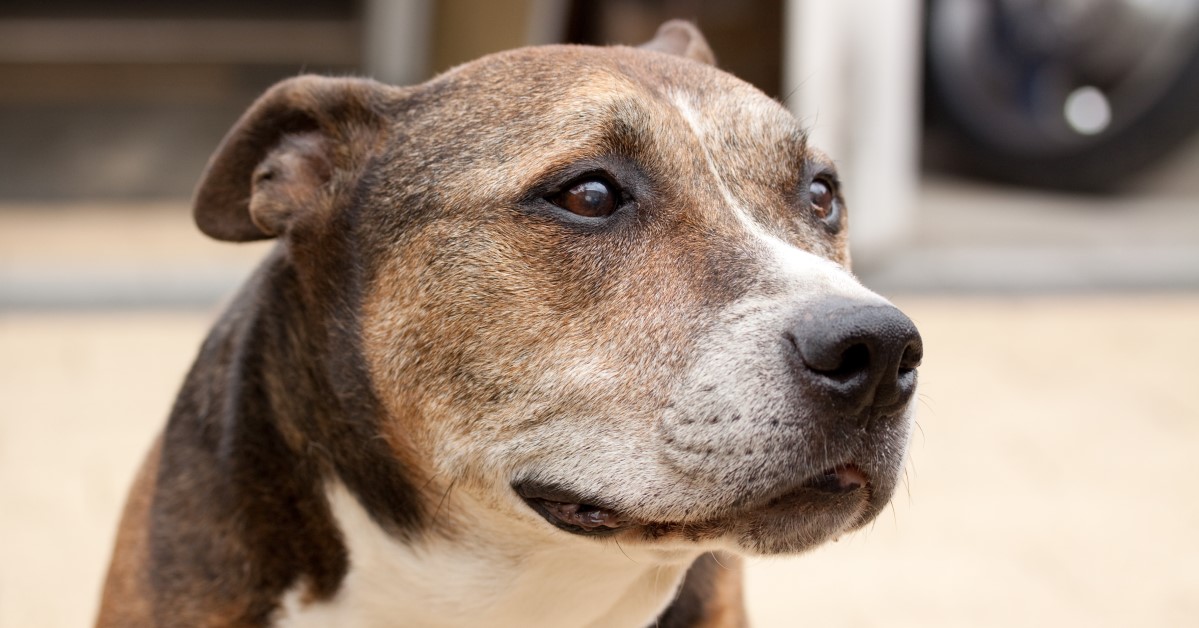Caring for Blind or Deaf Dogs and Cats
These smart, simple strategies can help you give your blind or deaf dog or cat a great life.

Just as humans may experience blindness and deafness, so do a fair number of dogs and cats. You might have adopted a blind or deaf pet home because you want to help it any way you can, or your four-legged friend may have lost its vision or hearing over time. Either way, your beloved pet can still enjoy a happy, safe, and healthy life even without one of their senses. Take a look at some helpful tips for caring for a blind of deaf dog or cat.
Recognizing Blindness and Deafness in Dogs and Cats
Blindness or deafness can occur in cats and dogs for a variety of reasons. Some animals are blind or deaf from birth due to genetic factors that make them especially vulnerable to these conditions. Old age commonly results in hearing and/or vision loss. Ear wax buildup and recurring ear infections can make a pet hard of hearing, while a traumatic eye injury or chronic eye disease can lead to blindness. Regardless of your pet's overall health and stage of life, you need to know the telltale signs that it can't see or hear normally.
Signs of Blindness in Dogs and Cats
A blind pet may display unusual caution or hesitation when making its way around the house, despite its familiarity with the layout. Sudden vision loss due to an acute eye injury or disease may cause it to run right into objects, much to its surprise. Check your pet's eyes for abnormalities such as clouding of the pupils (which indicates cataracts), redness, or pupils that appear fully dilated all the time.
Signs of Deafness in Dogs and Cats
Deaf dogs and cats often sleep more than they once did for the simple reason that their ears aren't picking up aural cues that would normally wake them up. If you nudge your dog or cat awake, it may act unusually startled or upset. If your dog or cat no longer responds to a clicker, hand clap, or voice command, it may have lost its ability to hear you. Cats that can no longer hear well may vocalize more loudly than they once did because they can't hear themselves.
Helping Your Blind Cat or Dog Get Around
A consistent environment can make a huge difference in your pet’s ability to navigate their home more easily. Place all your pet's favorite and essential items -- litter box, food and water bowls, toys and so on -- in the same general part of one room so your pet doesn't have to roam awkwardly around in search of them. Try to keep your furnishings where they are to help prevent collisions and confusion.
Keep in mind that a blind animal often relies that much more heavily on its other senses. Talk to your blind dog or cat so it won't feel alone and can figure out where you are in the house. Spray pheromones here and there to help your pet locate important items. (If it's having trouble locating its food bowl, consider putting out smellier food.) You can even attach a bell to another pet's collar so this pet can serve as a "guide" or point of reference for your visually impaired friend. To wake a deaf dog or cat from sleep without alarming it, tap or knock on the floor so the vibration will wake it up.
Training a Blind or Deaf Pet
Blind or deaf pets can respond just as readily to training as other animals if you employ the right techniques. For instance, a deaf pet can learn to perform various tasks cued by hand signals, scented sprays, laser pointers, and other stimuli. First set up a routine for rewarding the desired behavior with treats, then add the visual signal until the dog or cat recognizes the signal as a command to perform that behavior.
Blind pets can learn to respond to voice commands that they associate with specific tasks. Again, reward correct actions with treats to reinforce the training. Teach your dog words like "step" or "watch" so you can let it know when it's about to confront an obstacle during its training sessions.
Safety Considerations for Blind Animals
Blind or deaf animals may require some extra safety considerations. For example, you should always walk a deaf dog on a leash, since you might not be able to call it back to you once it gets away from you. Ideally, blind or deaf cats should become indoor-only pets.
Microchipping can prove especially critical for a blind pet that might get lost easily. Your veterinarian can inject the microchip easily and affordably, enabling animal workers with an RF scanner to read the chip's ID number and locate you through it.
Give Your Disabled Pet a Great Life
In addition to the special extra steps noted above, you'll want to provide your blind or deaf cat or dog with the same routine care every pet needs and deserves. Schedule regular wellness exams so your veterinarian can confirm that your pet continues to thrive, especially if the sensory deficit is age related. If you worry that your pet's disability may be affecting its eating habits or safety, talk to your vet about potential solutions. Remember, your best friend is depending on you!
Ready to start saving money on pet wellness care?
Then take a look at Mint Wellness, the pet wellness plan that provides fast reimbursement on routine pet care. Save on vaccinations, wellness exams, preventatives, dental, and more!
Learn More


